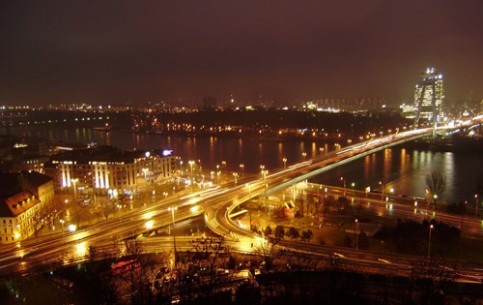
Search:
![]() Cities
Cities ![]() Slovakia
• all objects
Slovakia
• all objects ![]()
The cityscape of Bratislava is characterized by medieval towers and grandiose 20th century buildings
Bratislava is in the south-west of Slovakia on both banks of the Danube River. It is the political, cultural, and economic centre of Slovakia. It is the seat of the Slovak presidency, the parliament, and the government. It is also home to several universities, museums, theatres, galleries. The history of the city, long known by the German name Pressburg, has been strongly influenced by various peoples, including Austrians, Czechs, Germans, Hungarians, Jews and Slovaks. The city was the capital of the Kingdom of Hungary under the Habsburg monarchy from 1536 to 1783. The reign of Maria Theresa is regarded as a golden era in the city’s history. She was crowned Queen of Hungary in St. Martin’s cathedral in Pressburg, just like the 10 other kings and 8 royal partners over the course of 300 years when Pressburg was in fact the capital of the Kingdom of Hungary.
Bratislava has a very pleasant medieval inner city with tiny, narrow winding streets, surrounded by the biggest concrete block house complex in Central Europe called Petržalka that stretches on endlessly. The gate of St. Michael is the only preserved gate of the medieval city fortifications. During 1511 - 1513 it was heightened, and during 1753 – 1758 it was rebuilt into its present appearance when a statue of St. Michael was placed on the top of the 51-metre high tower. At present, the Museum of Weapons and City Fortifications is located within the tower. A very nice view of the old city is provided from the tower. Trinitaries’ Church was constructed by the order of Trinitaries in 1717-1723. It is a great sample of the Baroque style. Grassalkovich Palace was constructed in 1760, when Count Anton Grassalkovich ordered the construction of the Baroque palace. The Palace is also famous because Joseph Haydn was the director of the home orchestra in 1772.
The castle dominates over the city of Bratislava on a hill overlooking the river Danube. During the Great Moravian Empire, Slavs built a fortress that became a significant centre at the time. In the 15th century, during the reign of Sigismund of Luxembourg, the castle was built in Gothic style as an anti-Hussite fortress. In the 17th century, when the castle became the seat of hereditary province chief Pálffy, it was rebuilt in a baroque style. Today the castle serves the Slovak Parliament and houses collections of the Slovak National Museum, exhibitions of Treasures from the ancient past, as well as the Museum of History.
Bratislava has some interesting museums. One of them is the Slovak National Museum, with naturalist expositions. There are also the Slovak National Gallery, with Slovak Gothic and Baroque art; the Museum of Jewish Culture, with valuable fragments of a vanished population; and the Museum of Archeology. Another of the symbols of Bratislava is the Novy Most connecting banks of the Danube River. There are plenty of rural places nearby the city. Farms, vineyards, agricultural land and tiny villages are situated just about 50 kilometers to the east of Bratislava.







